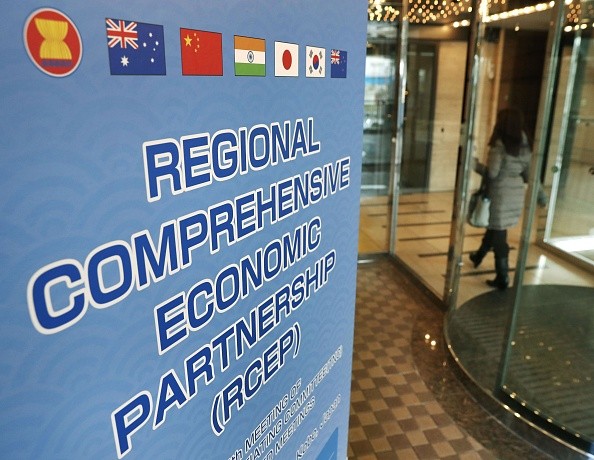Key Asia trade talks on alternative to TPP end, no major deal struck

The Mainichi | 4 March 2017
Key Asia trade talks on alternative to TPP end, no major deal struck
Kobe: Senior officials from 16 Asia-Pacific countries wrapped up their talks on Friday with no major breakthrough on what could be an alternative regional free trade deal to the Trans-Pacific Partnership.
The new round of talks in Kobe, western Japan, by members of the Regional Comprehensive Economic Partnership drew international attention as it was the first such meeting held since U.S. President Donald Trump pulled his country out of the TPP in January.
The RCEP framework, which accounts for more than 3.5 billion people or half the world’s population, with 30 percent of the world’s gross domestic product and trade, is now viewed as a crucial regional trade pact and alternative to the pending TPP, which covers about 40 percent of the global economy.
While the negotiators failed to bridge their differences over certain issues such as tariff cuts during the five-day meeting, the RCEP members — the 10-member Association of Southeast Asian Nations plus Australia, China, India, Japan, New Zealand and South Korea — reaffirmed their goal to conclude negotiations as soon as possible.
"There was no agreement on any field, but vigorous negotiations were carried out," Keiya Iida, deputy director general of the Japanese Foreign Ministry’s Economic Affairs Bureau, told reporters following the talks that began Monday.
Iida vowed to "continue to aim for the early conclusion of a high-quality, well-balanced and inclusive pact."
The negotiators also discussed deregulation of investment and service trade, according to officials privy to the meeting.
One of the issues has been the extent to which tariffs would be allowed under an RCEP deal between Japan, a leading TPP member, and the emergent economic powers of China and India, which are not included in the TPP pact.
While India and China, keen to protect their local industries, are cautious in their approach to tariff cuts, Japan is vying for a high-standard trade liberalization.
In the latest round of RCEP talks, meetings were also held with civic group representatives and academics to reflect the views of those other than government officials.
With the pending TPP, Japan faces the difficult task of reviewing its trade policy. For now, it is promoting the RCEP framework, an economic partnership agreement with Europe and a newly launched high-level bilateral economic dialogue on trade and other economic issues with the United States among other trade talks.
Trump has been pushing for bilateral rather than multilateral trade deals. The United States, the world’s largest economy, is not part of the RCEP.
With China, the world’s second-largest economy, promoting the RCEP in the absence of the United States, Prime Minister Shinzo Abe, a proponent of the TPP deal, has expressed concerns about Beijing’s possible control over trade in the Asia-Pacific region.
The RCEP members are scheduled to next meet in the Philippines in May.
RCEP negotiations began in 2013. Member countries have so far reached an agreement in the fields of economic technology cooperation and contribution to smaller companies. Among 16 RCEP economies, seven countries, including Japan and Malaysia, have joined the TPP deal.





